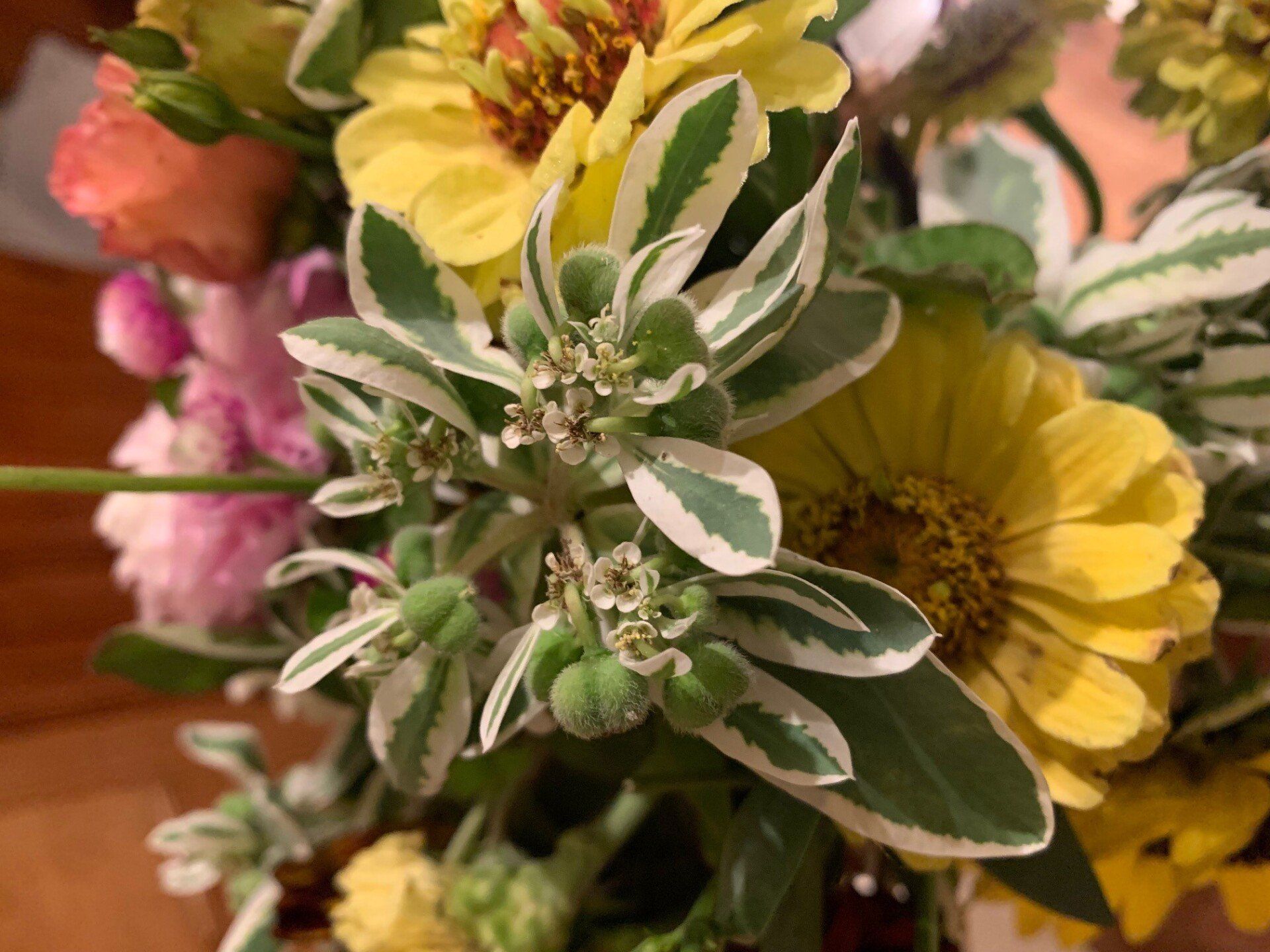the good doctor On: A Nice Day For A ….Fall…Wedding.

Blog Vol.2, # 21. A Nice Day For A ….Fall…Wedding.
This past weekend, my daughter and her fiancé, hosted us at their much anticipated and much planned wedding. They have a wonderful garden and grew most of the flowers for the event. The table settings, the bouquets, the decorations for the ceremony and the reception were all adorned with an abundance of beautiful fall flowers. One of the plants they used was a very decorative filler called Euphorbia, better known as Spurge. Two of her bridesmaids, very gifted with flowers and with flower arranging, spent Friday cutting and arranging for the big day. Saturday morning, the wedding day, AHHHHH!!!, the bride and one of the bridesmaids woke up with a nasty rash on their faces and around their eyes. Redness, swelling and itching ensued, and a call to the bride’s father, namely me self, to see what to do. The bridesmaid had a much more dramatic reaction and went to urgent care. The bride’s reaction was milder, the diagnosis: contact dermatitis.
Who knew that Euphorbia, such a lovely, easy-to-grow plant is so notorious? We learn something every day, sometimes, unfortunately, the hard way. When the plant is cut, it releases a sap that is a milky latex-like liquid which is quite caustic. The sap contains diterpene esters which are toxic when ingested and an irritant to the eyes and skin after contact.
The mechanism of contact dermatitis, or delayed hypersensitivity reaction, involves the immune system. Since Euphorbia is everywhere, up-to 8000 species in the genus, it is very likely that a person has been previously exposed. The initial exposure to the esters causes a build-up of T lymphocytes in the lymph nodes, and when this person makes contact with the Euphorbia sap again, then the body sets up the delayed immune response. Unlike a normal allergy, where the mast cells release histamines, in this case the lymphocytes start a cascade of immune reactions.
Treatment will depend on the exposure and severity and will also depend on the person’s individual response. In this case, the severity of the bridesmaid’s reaction required an oral corticosteroid, which fortunately aided in reducing symptoms very quickly. The bride was able to manage her reaction with cold compresses and eye drops. If the sap gets into the eye, it can cause severe conjunctivitis and even uveitis (very bad). Immediate attention must be sought.
If you suspect the possibility of being exposed, time for PPE: gloves and goggles to keep from contacting the sap.
By the way, there was a happy ending to this story. Everyone was on the mend by the time of the ceremony, the flowers were stunning, and the wedding was lovely! Congratulations Emily and Michael!
til next week,
the good doctor, Dr. Mark Germain, Burlington Optometrist






